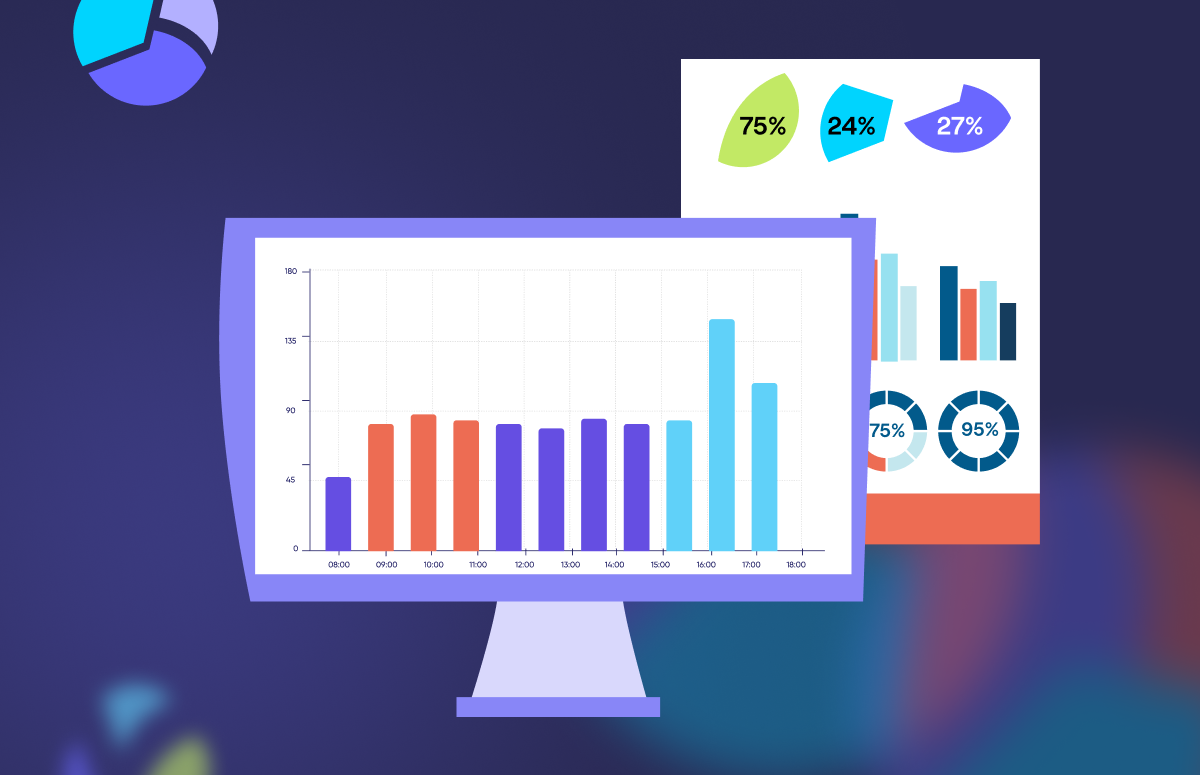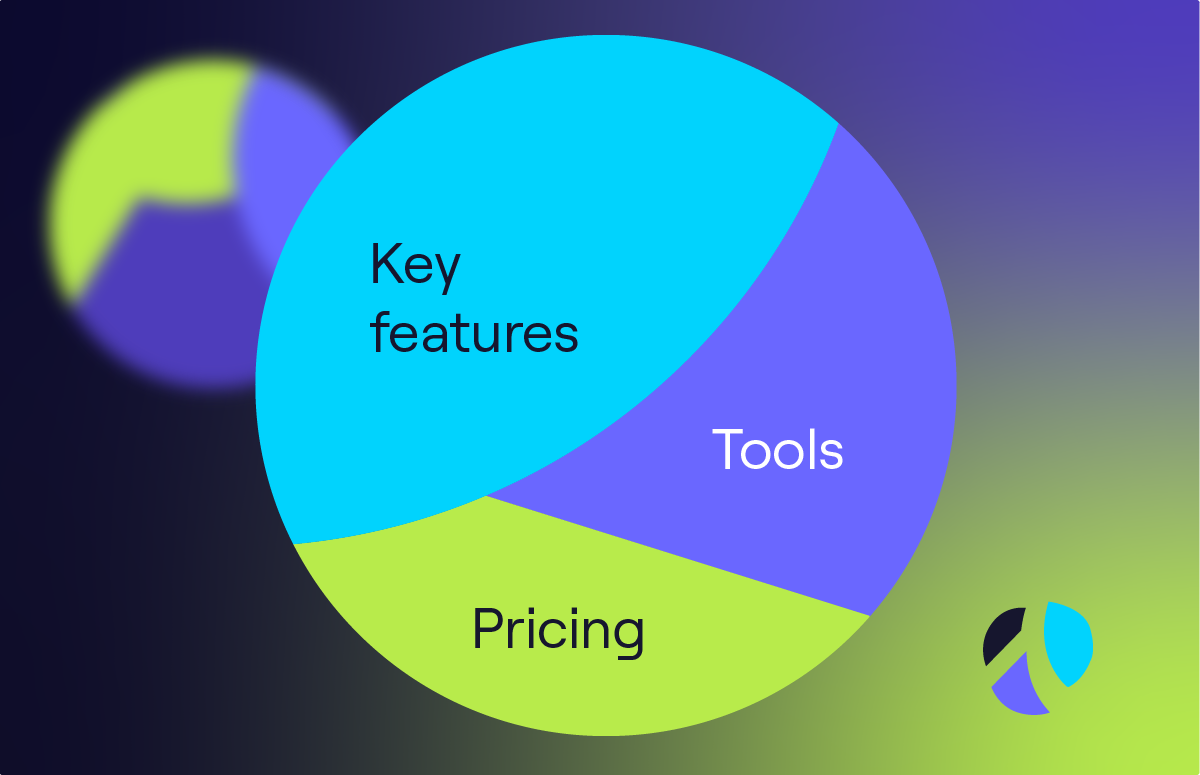Outbound Sales Automation: Definition, Tips & Tools
What's on this page:
Outbound sales automation doesn’t mean fielding some massive army of sales bots. Nobody wants that.
Instead, it means arming your sales team with tools that help them finish admin work more quickly, so they can spend more time talking with prospects (the deep work of sales).
Today, we’ll cover the basics of outbound sales automation - what it is, why you should use it, areas to automate, tips for doing it right, and the best outbound sales automation tools.
Let’s jump in 👇
What is outbound sales automation?
Outbound sales automation is the next step in the evolution of outbound sales. It takes manual tasks away from sales teams, making them quicker and more reliable.
Facilitated by software, sales automation takes over various repetitive tasks:
- Cold emails.
- Follow-ups.
- Building prospecting lists.
- Lead assignment.
- Contract drafting.
Automation helps salespeople to manage their working time more effectively and achieve more sales goals. It also lets people concentrate on functions only humans can do (e.g., building relationships with prospects and closing deals).
Why should you automate your outbound sales process?
Wherever you can, you should try to automate your outbound sales process.
Here are three reasons why:
- Automation saves time for your salespeople. It eliminates repetitive tasks, meaning they can spend more time servicing prospects and customers.
- Automation boosts accuracy and minimises human error.
- Because you can! Automation technology has never been easier to use or more accessible.
Which areas of the outbound sales process can you automate?
These are the seven areas to look at:
1. Lead generation
Lead gen happens at the start of the B2B sales process. It’s a sequence of events where you identify people who could be potential customers and start building their interest in your product.
Lead generation is one of the most critical parts of the sales process - if you don’t have high-quality leads at the start, you won’t close enough deals at the end.
Data is an essential part of lead gen as it’ll help you find the people most likely to be interested in your product. You also need complete and up-to-date contact data to reach out to them quickly.
In the past, salespeople scanned directories or the internet for information. An outbound sales automation platform can help you identify the best leads - at scale.
Tools to automate outbound lead generation
With just a few clicks, B2B data providers such as Cognism can deliver up-to-the-minute data on leads that exactly match your ideal customer profile. Then, your salespeople can get on with grabbing their attention.
2. Prospecting
In prospecting, you reach out to the leads you identified at the previous stage and try to get them interested in your offer.
Once they are, the next part is qualification, where you determine if the prospect:
- Actually needs to buy your product to solve a problem.
- Has the budget and the authority to buy your product.
- Is ready to make a purchase.
The more leads you qualify in (and out) of your sales process, the more efficient your pipeline becomes. Outbound sales automation is there to make prospecting faster and more effective.
Tools to automate outbound prospecting
If cold calls are part of your prospecting process, you can use an autodialler to help your salespeople make more calls.
B2B data providers like Cognism can help you send templated emails at scale and monitor results. You can also utilise email outbound automation such as Salesloft to construct sequences of emails, calls, social contact and more to meet your prospects where they are.
3. Booking meetings
Meetings are often where the real business happens. However, they can be difficult to arrange when your salespeople or buyers’ calendars change, and they need to move things..
Automation can speed up the process of booking meetings, eliminating the back and forth and ensuring your prospect shows up.
Tools to automate booking meetings
Chili Piper is an outbound sales appointment automation tool that turbocharges the meeting booking process. It lets you and your prospects schedule meetings when everyone is available, links with your calendars, sends reminders and more.
4. Organising leads
Tracking your leads as they move through your sales process is essential. You need to know the status of each lead, so you know what to do next.
You must also prioritise your leads so your salespeople can use their time best.
And, as salespeople in your team come and go, you need an up-to-date record for each lead, with all the relevant information. This is so someone new can come in and take over if necessary.
Tools to automate organising leads
Your CRM should be the central hub for all the information on your leads.
But, updating your CRM every time someone speaks to or emails a lead is inefficient.
Use outbound sales automation software that integrates with your CRM and keeps it updated whenever a new conversation happens.
Automatic B2B data enrichment ensures your team always operates on accurate intel.
5. Conducting demos
The demo is part of the sales process where sales reps show prospects:
- How the product works.
- The most relevant features.
- Why they solve the prospect’s problems.
Salespeople also use demos to answer questions, build trust, and solidify relationships with new buyers.
Most B2B sales teams cover a country or entire region like EMEA. Logistically, having salespeople travel globally to conduct in-person demos is not feasible. You’ll never be able to do it at scale. That’s why you need automation.
Tools to automate conducting demos
Video conferencing tools like Zoom help you conduct demos as if in the same room. You can share your screen or even play videos within calls to demonstrate the effectiveness of your product.
Plus, the recording feature helps you review calls when you return to them later, opening up opportunities to coach reps and learn more about your customers.
6. Drafting contracts
The contract stage is the culmination of the outbound sales process. It’s where the deal gets done.
First, you draw up a contract that covers all eventualities. Then, you send it to the prospect, who gets it signed off. Once they send it back to you, you’ve closed the deal.
This is often a part of the process where things can go wrong, so the faster you can get the contract over to the prospect, and the easier it is for them, the more likely you are to close the deal without a glitch.
Tools to automate drafting contracts
Use outbound automation software to help you. You can get contract management software such as Juro to create and manage contracts, ensuring it covers all bases.
You should also use an e-signature solution to make it simple for your prospect to sign the deal and whizz it back to you with no printing required.
7. Analysing results
Getting better results in your outbound sales process is about analysing the data and identifying improvement areas. Make sure your tech stack gives you the best sales data and that you have the tools to use it correctly.
Tools to automate analysing results
You can use call recording software like Gong to tell you what the best performers in your team say to their prospects. Then, you can coach the rest of your team to model their actions.
Or you can deploy analytics tools like Kluster that tell you exactly what’s working (and not working) in your pipeline.
Tips for outbound sales automation
Below are some key tips for getting the most out of sales automation.
1. Research your ICP
Your ideal customer profile (ICP) describes a semi-fictitious buyer who’ll get the most out of your solution.
It outlines the demographics, technographics, goals, challenges, and other features of your target buyers.
Gaining a deep understanding of your ideal buyer not only helps you find quality leads. It also enables you to create automated sales outreach that’s personalised and relevant.
For example, in your outbound sales automation tool, you can create pre-written automated email sequences that use language that speaks to the ideal buyer’s goals and pains.
Your ICP will fuel many of the prospecting and lead generation automation choices you make.
2. Create quality prospecting lists
You want to ensure your team spends their time reaching out to leads who match your ICP.
Otherwise, you’ll end up with many lonely emails or long demos with prospects who are a terrible fit for your offering.
There are B2B prospecting tools that can help you create highly targeted lists. They’re simple to use too.
You input your ideal customer’s characteristics (industry, technologies used, etc.). Then you receive a list of high-quality leads and their contact info.
Cognism can help you achieve this. Why not give it a try with 25 free leads 👇
3. Automate emails and follow-ups
Writing a cold email from scratch for each new prospect is highly inefficient, especially when the average reply rate is between 1-5%.
To succeed in cold emailing campaigns, you must balance quality with quantity. Outbound sales automation tools allow you to do this.
Thanks to smart fields, a tool like Cognism can build automated email sequences containing several emails that are auto-personalised to each recipient.
The software automatically fills fields like {lead’s job title} with the information in its database.
Similarly, your CRM should also automate follow-up emails for various sales situations.
Most platforms empower you to create rules around follow-up emails. You can choose when the trigger email is sent based on the number of days without a response.
This outbound email automation nudges prospects through the pipeline without requiring your effort.
4. Manage your leads
Lead management involves tracking leads, organising them into categories for outreach, and routing them effectively. A CRM with lead management functionality will automate all of this for you.
For example, you could set up lead routing rules that cause your CRM to automatically assign leads worth $40,000 or more in MRR to your team’s top closer.
It’s also a best practice to set up a lead scoring system in your CRM. These systems score leads based on:
- Attributes: How similar they are to your ICP.
- Behaviour: How likely they are to make a purchase.
Once leads reach a certain point threshold (which you determine), they’re routed to the person on your team best suited to close the deal.
Automated lead scoring systems ensure that your team prioritises the highest quality leads.
5. Learn from past calls
Guessing isn’t very scientific. Reflection alone makes it hard to determine why a sales call went awry.
“I guess he just couldn’t catch my sarcasm!” the rep says on their way to the snack cabinet.
Even if the rep doesn’t have an ego problem and tries to assess the call objectively, it’s still a challenge to divine the actual cause without lots of data and analysis.
Theoretically, a sales rep turned mad scientist could capture this data manually, but it’s probably better to use sales automation software.
A tool like Gong automatically analyses your team’s sales calls and tells you what actions lead to success and failure.
For example, the tool might discover that cursing improves calls with C-suite executives but not with middle managers.
We’ll leave what that finding says about society to the social scientists! But what it says about how to approach sales calls is extremely useful for salespeople.
Top three tools for outbound sales automation
There’s not one best outbound sales automation tool, but combined Cognism, Salesforce, and Gong automate every aspect of the sales process for the best success.
Let’s take a look at each:
1. Cognism
Cognism is an AI-powered sales intelligence platform that automates lead generation and sales prospecting tasks.
Thanks to its extensive database and numerous filters, it can help you find high-quality leads who match your ideal customer profile.
The tool also provides you with up-to-date information about these individuals — such as job titles, phone numbers, and email addresses.
Most users integrate it with their CRM to automatically enrich their contact and company records with fresh B2B data.
Discover how B2B sales teams use it to boost performance and pipeline 👇
2. Salesforce
Salesforce is a CRM with automation features for lead management, follow-ups, and more.
It tracks all interactions with leads, from email to phone calls, so reps always know what their lead has experienced and what they need.
It also helps you manage your team or yourself. With its process builder, you can create step-by-step workflows aligning reps with sales best practices.
For example, you make it so that reps receive a reminder notification after giving a demo to send a recap email.
3. Gong
Gong is a revenue intelligence platform that uncovers what top-performing reps are doing so the rest of your team can emulate them.
It’s like having a data scientist on your team, observing and analysing each interaction between your reps and prospects and identifying the actions that lead to success.
Growth in any discipline requires accurate and consistent feedback. Gong provides this for sales reps.
The ultimate outbound sales automation solution
Upgrade your tech stack with and start automating list building, sales trigger tracking and more with Cognism!
Discover how to find the information you need to make fewer calls, contact the most relevant people, and hit quota faster. Click the banner to book a demo 👇




